Then something went wrong
For Fay Wray and King Kong
They got caught in a celluloid jam
Prior to the release of "King Kong" on March 2, 1933 Fay Wray had appeared in a combination of 52 other motion pictures and shorts. These films would include two classic horror movies and two previous productions by the team of Merian C. Cooper and Ernest B. Shoedsack.
This is a look at the actress who would forever be known as "Ann Darrow", before she was seen as the "Beauty" to Kong's "Beast". I am not going into details on each of those 52 films, but besides the four I just alluded too are many interesting roles that I will specifically mention.
Vina Fay Wray was born on September 15, 1907 in Cardston, Alberta, Canada.
The community of Cardston was settled by members of "The Church of Jesus Christ of the Latter-day Saints", The original settlers left Salt Lake City on April 6, 1887 and arrived at the site of their new Canadian home on June 3rd. Their's was one of the final migrations of Mormon's from Utah and the last on the Macleod-Beton Trail from Fort Benton in the State of Montana to Fort Macleod in Alberta, Canada.
Fay Wray's mother was Elvina Marguerite Jones born in Salt Lake City and her father was a member of the church from Kingston upon Hull, England named Joseph Heber Wray. In 1912 five years after her birth the family returned to Salt Lake City. After spending two years there the family relocated to Lark. This was probably due to the mining of silver, zinc and lead which the community was founded around by Mormon miners and their families. Today Lark is a Ghost Town as the veins started running dry during the 1950's and twenty years later the last miners left.
For some reason in 1919 the family once again returned to Salt Lake City, but a short time later the decision was made to go to California. The family settled in Los Angeles and Fay started to attend Hollywood High School. The school which was established in 1903 was a source of many movie extras and future motion pictures stars. A few names of the schools graduates besides Fay Wray included Keith and Robert Carradine, Lon Chaney, Jr., Judy Garland, James Garner, John Huston, David and Ricky Nelson, Joel McCrea, Alan Ladd and Lana Turner.

The young teenager started to work as an extra in films and in 1923 she was the only actor in a short called "Gasoline Love". This was Fay Wray's debut picture and apparently was a historical film sponsored by a local newspaper, but I could not locate anything about what the historical event the film portrayed had been. The only confirmed fact about "Gasoline Love" was Fay Wray was the only person in it.
http://www.silentera.com/PSFL/data/G/GasolineLove1923.html
Wray's next two roles, if you could call them that. Found her in the 1924 Charley Chase comedy short "Sweet Daddy" as "the girl in the car". Followed by "Just A Good Guy" as "the girl entering the Taxi" which was by Hal Roach. While still doing bit parts for Hal Roach in 1925 Fay Wray was given the third billing role of Beth Slocum in "The Coast Patrol"..
"The Coast Patrol" follows the typical dramatic scenario of a young women being ruined by a scoundrel. Here is part of a review submitted to IMDb by John Howard Reid:
By the humble standards of the independent "B", this is quite a noteworthy effort. Of course, most interest will now lie in seeing cult heroine Fay Wray in one of her earliest roles. Already, she is the focus of our attention, quite putting "other girl", Claire de Lorez, in the shade, and even focusing our attention away from hero, Kenneth McDonald. Only delightfully villainous Gino Corrado (who made his living playing waiters all through the sound period) can hold a candle to her, although hammy Spottiswoode Aitken makes a game (if misdirected) try!There are several on line copies of Fay Wray's first full length feature for those of my readers interested in viewing it.
Then it was back to eleven Hal Roach shorts for the remainder of 1925 in basically walk on's. Examples of the descriptions given for Fay Wray's parts are:
"Sales girl at department store", "Concerned girl with perfume". "Potential Pen buyer" and "Beach House Cashier".
In one of these shorts "Thundering Landlords" Fay Wray had second billing as "The wife", but you wouldn't know it from the poster.

In Hal Roach's "Moonlight and Noses" Wray had fourth billing as "Miss Sniff, the Professor's Daughter". As with most of these shorts it was the lead actor who got the poster credit:
http://www.legendaryauctions.com/lot-37622.aspx
It is possible, but never confirmed that Fay Wray played "a slave girl" in the 1925 silent classic version of Civil War General/Governor of New Mexico Lew Wallace's novel "Ben Hur", but so did everyone else on the MGM Lot. Extra's in this epic motion pictures used to fill the stands for the big Chariot Race, if you have great eyesight, were unknown contract players Myrna Loy, Carole Lombard, Clark Gable, Janet Gaynor Joan Crawford and Gary Cooper. Then there were the known actors asked to participate These included John and Lionel Barrymore, Mary Pickford and her husband Douglas Fairbanks, Dorothy and Lillian Gish, one of the films producers Samuel Goldwyn, Sid Grauman who would build the Chinese theater on Hollywood Boulevard and comedian Harold Lloyd just to name a few out for a free lunch on MGM.

July 12, 1926 saw the release of a group of westerns featuring Fay Wray. Her first western motion picture was "The Man in the Saddle" starring popular cowboy Hoot Gibson. Wray was fourth billed as Pauline Stewart apparently the only women in the cast.
Playing a screen credited robber in this western was a young actor named Boris Karloff and also in the movie was Janet Gaynor in a walk on. At this point Fay Wray went under contract to Universal Pictures and followed up this Hoot Gibson feature with a twenty minute western short "Don't Shoot"directed by William Wyler who was still learning the ropes. Wyler would go on to direct such motion pictures as 1959's "Ben Hur" starring Charlton Heston and Stephen Boyd, "The Friendly Persuasion" starring Gary Cooper, Dorthy McGuire and Anthony Perkins, "Funny Girl" starring Barbara Streisand and Omar Sharif and "The Big Country" starring Gregory Peck, Charlton Heston, Jean Simmons and Carroll Baker.
"Don't Shoot" would be followed by another seven westerns for Universal Studios taking Fay Wray through 1927. To show the effect of all these films on her budding career. The "Western Association of Motion Picture Advertisers" known as "WAMPAS" had a yearly promotional campaign were they "honored" actresses the Association felt were on "the threshold of stardom". In 1926 Wray joined Joan Crawford, Mary Astor, Dolores del Rio, Dolores Costello and Janet Gaynor in this honor as one of the "WAMPAS Baby Stars",
1928 found Fay Wray with top billing co-starring with Gary Cooper in director William "Wild Bill" Wellman's "The Legion of the Condemned". The film was about the American members of the "Lafayette Escadrille".

Wray played Christine Charteis and Gary Cooper one of the American pilots flying for France that she loves. Cooper believes she is a German Spy and has broken off their romance. As he goes to his plane to fly a Spy behind enemy lines Cooper discovers it is Wray, Christine Charteis is in actuality an operative of the French Secret Service and couldn't reveal her true identity to him previously.
What makes this unfortunately "Lost" motion picture so excellent are the flying sequences. Director William Wellman was a World War 1 flier for the French, before the United States entered the war in another of France's American Escadrilles. He wrote a book about his experiences "Go Get 'Em". I have this book and it is a strong proponent for American Air Power at the time, Along with Wellman's autobiographical story of flying during the First World War. Here is a link to the book:
http://www.amazon.com/Adventures-American-Aviator-Lafayette-Illustrated-ebook/dp/B00CMD9LBM/ref=sr_1_7?s=digital-text&ie=UTF8&qid=1448382474&sr=1-7&keywords=william+wellman
In 1927 William Wellman was a very low Assistant Director at Paramount Pictures. However, they wanted to make a motion picture about American fliers during the World War and he was recommended to the executives. The movie was "Wings" and won the first Academy Award for Best Motion Picture ever presented. The motion picture had been nominated in many categories, but not for its director.
"Legion of the Condemned" used some of the footage Wellman had shot for "Wings". Another interesting point is that it was Wellman who "discovered" Gary Cooper. He gave Cooper a two minute scene as a doomed American pilot in "Wings" and overnight Gary Cooper went from unknown extra to leading actor. True Story.
Fay Wray's next motion picture was 1928's "Street of Sin". Once more we are speaking about a "Lost" motion picture. The only plot information I could locate came from the website: "movie review query engine (MRQE)" and reads:


Fay Wray and Gary Cooper were back together in a romantic love story.


Fay Wray's next movie released October 8, 1928 had actually started shooting in June 1926 directed by and starring Eric von Stroheim. Shooting ended in January 1927 not because the motion picture was finished, but that Paramount was finished with von Stroheim the perfectionist re-shooting and re-shooting. The films original budget was $300,000 and it had risen to $1,250,000 when the production was shut down and film editing began. Those two figures in 2015 currency would have been $3,935,396 in June 1926 when the production began and $16,397,486 in January 1927 when the production was shut down.
Eric von Stroheim played Prince Nickolas von Wildeliebe-rauffenberg known as Nikki and Fay Wray played Mitzi, mitzeri Schrammell a inn keeper's daughter. Zasu Pitts plays the women Princer Nikki must marry for money Cecila Schweisser,




The following review of the motion picture from the New York Times makes mention of a possible sequel. Paramount had von Stoheim do just that, but the film called "The Honeymoon", also releasedin 1928, was never released in the United States. The film told of the marriage of Mitzi and Schani and the attempted murder of Nikki, but like most pictures at the time was about to fall victim to the "Talkies". "The Jazz Singer" with synchronized singing by Al Jolson and just a few words of unplanned spoken dialogue had been released by Warner Brothers on October 6, 1927 nine months after "The Wedding March" and before the out takes created "The Honeymoon".
http://www.nytimes.com/movie/review?res=9B04E5D8173EE73ABC4D52DFB6678383639EDE
"The Wedding March" was followed by the first of three motion pictures Fay Wray would make for the team of Merian C. Cooper and Ernest B. Schoedsack.
Released in June of 1929 and based upon A.E.W. Mason 1902 novel "The Four Feathers" was the third filmed version of Mason's work brought to the screen. There would be others that followed through 2002. The classic version being made by the Korda Brothers: Alexander and Zolton in 1939. However, this picture was one of the last major motion pictures of the silent era and would be released with a Movie Tone soundtrack with music and sound effects.

The story is set in the Sudan in 1885 as the British fight the armies of "The Mahdi". It tells of Lt. Harry Faversham, played by Richard Arlen, being accused of cowardliness by his two friends and his commanding officer. He is presented with each of the three's calling cards and attached is the traditional, for the British Army under Queen Victoria, feather with symbolizes Faversham's cowardliness. The fourth feather comes from his fiancee Ethne Eustace played by Fay Wray. The motion picture featured William Powell and Clive Brook,
The movie was a big budgeted production. It included scenes actually shot in the Sudan by Cooper and Schodsack making it one of the first Foreign location motion pictures. These scenes are described in a New York Times review on the film's release,




Merian C. Cooper is an interesting personality and his life is full of real adventure and political espionage possibly for the Office of Strategic Services (O.S.S.). He was definitely not the typical Hollywood Producer/Director. You can read his life story on my blog and you might believe what I have written is a Hollywood script, if it wasn't all true.
http://kinescopedreams.blogspot.com/2015/10/merian-c-cooper-life-of-real-carl.html
For the first time Fay Wray talks!
Released July 20, 1929 only one month after the release of "The Four Feathers" was "Thunderbolt". This was a pro-noir film about a master criminal known as "Thunderbolt", portrayed by George Bancroft, being caught and facing execution. Into the next cell comes Bob Morgan, played by Richard Arlen, a young man framed by "Thunderbolt" so he can kill him. Morgan's crime is that he has fallen in love with "Thunderbolt's" girlfriend Ritzy played by Fay Wray.


George Bancroft was nominated for the Best Actor Oscar for the motion picture.
"Thunderbolt" would be followed by two films starring William Powell "Pointed Heels" in 1929, and "Behind the Make-up" which started off 1930. The second Powell motion picture was followed by the very forgettable Paramount quickie titled "Paramount on Parade". A 102 minute motion picture to showcase Paramount Pictures talent which all the studios did from time to time. In her sequence Fay Wray with Gary Cooper, Richard Arlen and Jean Arthur had to perform the song "Let Us Sing to the Girl of My Dreams".

The song was one of two technicolor sequences in the movie. The footage survives, but not the sound. It sure would have been interesting to hear the singing voices of those four actors.
When Fay Wray and Gary Cooper made William Wellman's "Legion of the Condemned" two years earlier she had top billing, but Coop's star had risen in that short time and now with "The Texan" their billing was reversed.

Should you look at the poster for the 1928 film although Fay Wray is billed first. Both actors names are of equal size creating to the potential audience a sense of equality. However, looking at the poster for "The Texan" you see not only Gary Cooper with first billing, but a difference in the size of the letters used in their names. Wray's full name is about the size of Gary Cooper's first name, but also half the size of his last name "COOPER". A reflection of how far the extra "Wild Bill" Wellman gave a break too had now come and would stay for the rest of his life.
The screenplay was based on O, Henry's short story "The Double-Dyed Deceiver". Gary Cooper played "The Llano Kid" who after shooting a young gambler in self defense is forced to hide from the law. The Kid is helped by a corrupt lawyer who involves him in a swindle of a Mexican aristocrat. The typical O' Henry twist comes when the Lllano Kid finds out the young gambler was the aristocrat's son.
Two changes to the original story were made. The aristocrat became a widow and there is now a lovely niece Consuelo played by Fay Wray for love interest. Otherwise this is O. Henry's tale as written.
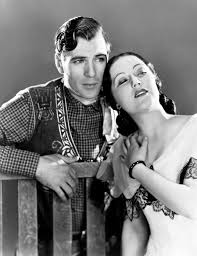
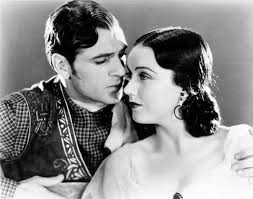
Five more "B" westerns brings Fay Wray to director Frank Capra's 1931 motion picture "Dirigible". "Wild Bill" Wellman wanted to do a film about Dirigibles and the men who flew them. He even had a finished script and had known many of the men who had flown this type of aircraft during the war. Especially as he fought for France and it was the European countries and more specifically the Kaiser's Germany that saw the airships potential as bombers. Wellman could not get the backing,he needed and it was Columbia Pictures that would make a film with the aforementioned Frank Capra as director. This film came out three years before Capra's "It Happened One Night" with Clark Gable and Claudette Colbert, six years before his production of James Hilton's "Lost Horizon" starring Ronald Coleman and Jane Wyatt and fifteen years before he made the annual Christmas classic "It's A Wonderful Life" starring James Stewart and Donna Reed.

As you can see my the above poster Fay Wray dropped to third billing on the picture, but she was also the only women listed in the film credits playing Helen Pierce. Helen is the wife of "Frisky" Pierce played by Ralph Graves and wants him to stop flying, because of all the risks he takes.
The motion picture tells of two expeditions to the South Pole. The first ends in disaster and the second is a rescue mission. The motion picture was notable for its flying scenes, showing the aircraft carrier Lexington during flight operations and a mid-air docking of a fighter aircraft with a dirigible. All authentically recreated among the other aviation sequences. The original story was by Frank "Spig" Wead who was also the picture's aviation technical adviser.
For my readers interested in Wead's inspirational life I recommend John Ford's 1957 motion picture "Wings of Eagles" starring John Wayne as Wead and Maureen O'Hara as his wife.
The script for "Dirigible" was written after Naval Lieutenant Commander Frank Wead had the accident in his home which forced him to take medical retirement, It had been thought at the time of the accident that he might never walk again, A powerful sequence shown in Ford's movie.
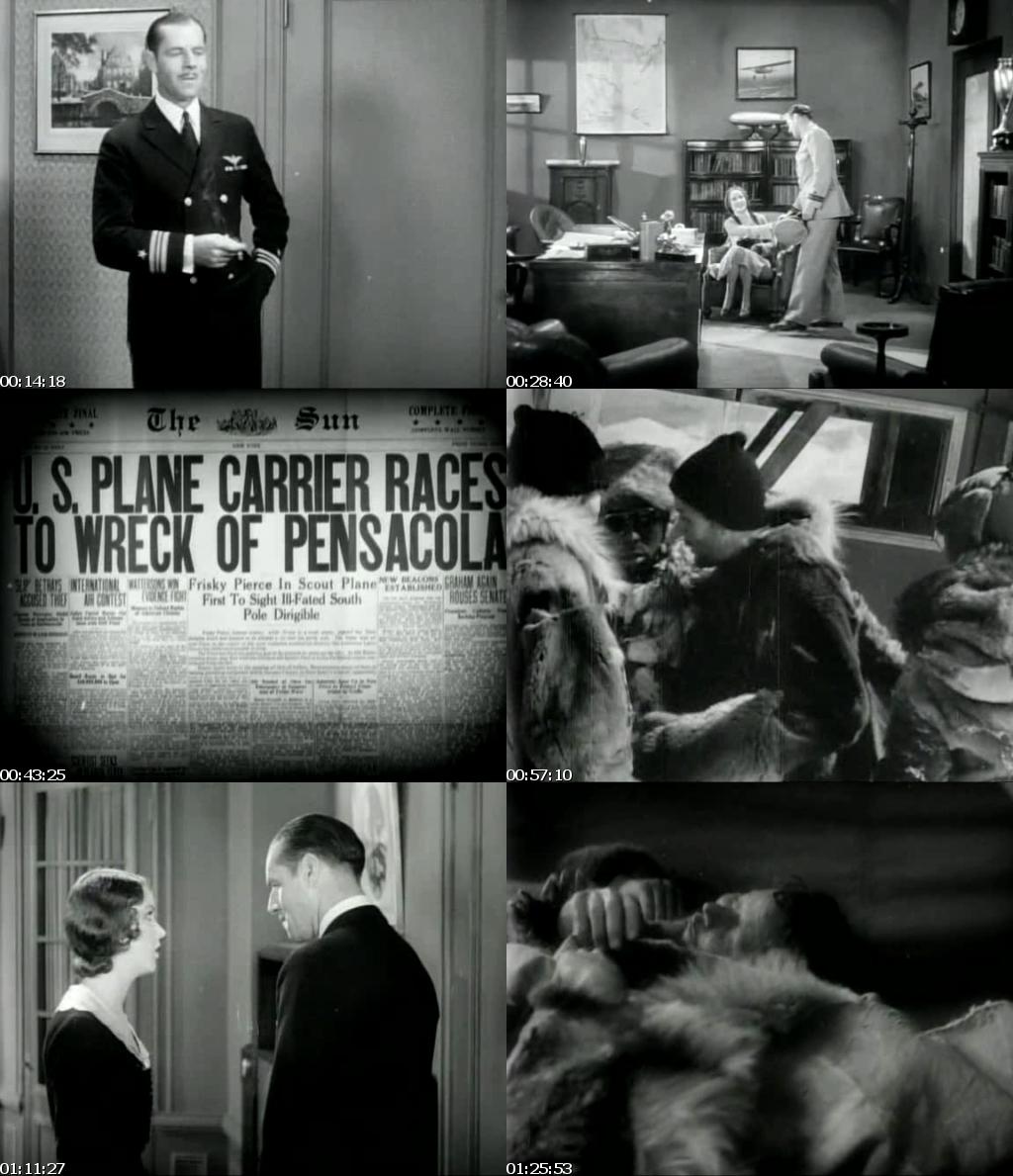

One short and four forgettable movies later would find Fay Wray being part of motion picture history by appearing in the first full length Two-Strip Technicolor Horror movie "Dr. X" from Warner Brothers released August 3, 1932. This was also the first of three horror films she would make opposite Lionel Atwill.

The story takes place in 1932 New York City and Long Island with tongue firmly in cheek. A reporter played by Lee Tracy is investigating the "Moon Killer Murders". His investigation leads him to the home of Dr. Xavier played by Lionel Atwill. Wray plays Atwill's daughter Joan and Tracy's love interest. Playing the doctor's one armed assistant Dr. Wells is Preston Foster.
The film is pre-Production Code and was able to use themes of rape, cannibalism, murder and prostitution revolving around the unknown killer. The climax comes when the killer is revealed as he uses "synthetic flesh" to create a horrific identity. That sequence occurs while Atwill is conducting an experiment with the approval of the police recreating the killers last murder. However, of course things go wrong as the "Moon Killer" in front of those watching the experiment attacks Fay Wray.
This movie by today's standards is pure camp with over the top performances, but it is also great fun.


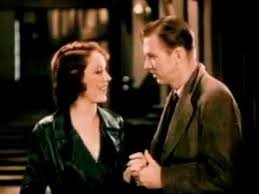


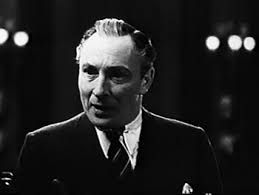
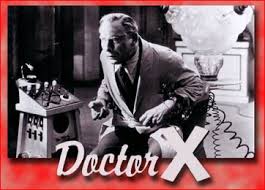
On September 16, 1932 Fay Wray appeared in her second motion picture from the team of Merian C. Cooper and Ernest B. Schoedsack "The Most Dangerous Game". As with "Dr. X" the picture is considered a classic of the period and has not been topped by several remakes.
The original 1924 short story, which I read in Junior High School, by Richard Connell was reworked by James Ashmore Creeman adding additional ship wrecked characters to the original one character. Fay Wray played Eve Trowbridge, Joel McCrea the original character of Sanger Rainsford, Leslie Banks was the villain of the piece Big Game Hunter Count Zaroff, Robert Armstrong the future Carl Denham in "King Kong" played Wray's brother Martin Towbridge.
Playing Count Zaroff's "henchman" Ivan was African American actor Noble Johnson. Johnson had appeared in many feature films since 1915 such as the "Murders in the Rue Morgue" as Bela Lugosi's "henchman". Over his career Noble Johnson would play more Native American roles than any Native American actor including "Red Shirt" in John Ford's "She Wore A Yellow Ribbon", However, Johnson would always be remembered for one role even if his name was not. He played the Chief of the Natives on Skull Island in "King Kong" and "Son of Kong".
Noble Johnson's life is very interesting including playing "White" roles in silent movies as my article on his life explains:
http://kinescopedreams.blogspot.com/2015/06/noble-johnson-african-american-pioneer.html
Noble Johnson as Ivan
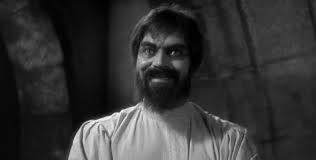
"The Most Dangerous Game" is of course "MAN"! Leslie Banks' Count Zaroff starts hunting his shipwrecked "guests" on his island. Zaroff is saving Joel McCrea's Sanger Rainsford a Big Game Hunter of renown for last. Of course McCrea and Wray are falling in love with each other which complicates matters for Zaroff.

Again note the billing on the poster. Even though Fay Wray is listed second this is Joel NcCrea's motion picture as the size of his name is twice everyone else, Leslie Banks a distinguished British actor on stage and in motion pictures is listed third and fourth billing goes to Robert Armstrong. Who like Wray would soon be forever associated with one motion picture, but the name of the man behind that film and this one is missing credit on the poster. The reason being that Merian C. Cooper and Ernest B. Schoedsack's partner David O, Selznick was the "Executive Producer" of "The Most Dangerous Game" and Cooper only "Associate Producer". Although this was Cooper's film from start to finish.


I post the above map, because think of it in terms of "Skull Island". Although the authorization to make "King Kong" had not been given when "The Most Dangerous Game" started production. Cooper told the RKO Executives not to schedule the films sets for immediate tare down as was the normal procedure. He told them there was another script he wanted to make and the sets could save the studio money by being reused.
It has been reported that both movies were shot at the same time on these sets. A lot of reviewers make it seem as if "King Kong" was shot during the day and this film at night. Like the previous years English and Spanish language versions "Dracula" at Universal Studio. This is not completely true as Cooper initially did shoot test footage of "King Kong" while "The Most Dangerous Game" was in production to show RKO Executives, but "King Kong" would be shot in segments to be reassembled later and, yes, some footage would be shot during the other films production.


Want to substitute Bruce Cabot for Joel McCrea in this scene from "The Most Dangerous Game" below?

How about the substituting the crew of the "Venture" for these two actors in this scene.
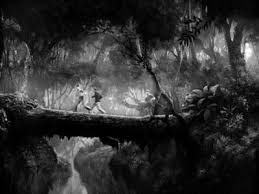
Leslie Banks as Count Zaroff
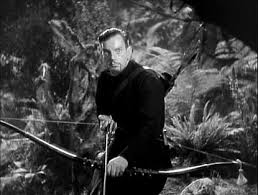
Robert Armstrong
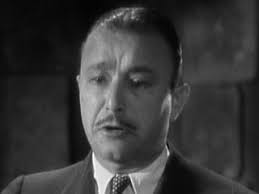
There's a major reason why both films were not shot at the same time. Although Robert Armstrong had contracted with Cooper for two films and would shoot some scenes in both on the same days as production completed on "The Most Dangerous Game". The part of Ann Darrow had not been cast. The idea of using Fay Wray had yet to cross Merian C. Cooper's mind. He decided he wanted a blonde for the part of Ann Darrow, This idea was to permit black and white contrast between the girl and the gorilla's pelt. Fay Wray was brunette.
Cooper wanted the popular 1930's actress Dorothy Johnson for Ann Darrow. When she couldn't do the role. Cooper next went to Jean Harlow and afterwards Ginger Rodgers. Both were unavailable, or didn't want to do the part. Live action filming for "King Kong" had been going off and on between May and June 1932 as the script was being revised and the search for Ann Darrow continued.
As of this writing "The Most Dangerous Game" is available on YouTube.
On January 21st the first of 11 1933 motion pictures featuring Fay Wray was released. It was actually her third horror movie with Lioniel Atwill, but only the second released. The film had the intriguing title of "The Vampire Bat". The reason for this change of position was due to the fact that although filming of "The Mystery of the Wax Museum" was completed. The picture was having post production problems. So "Majestic Pictures" rushed this quickie into production to use all the publicity for the Warner Brothers production to their advantage. They even hired actor Dwight Frye to be in some scenes with Wray as a means also for attracting audiences. It worked.

.
"Majestic Picture" along with some other small studios would be combined shortly into "Republic Pictures".
The plot for "The Vampire Bat" is described on the website IMDb by "Sister Grimm" <srgrimm@teleport.com>:
Frye played Herman Gleib and Fay Wray was cast as Ruth Bertin, Lionel Atwill played Dr, Otto von Nieman and Melvyn Douglas portrayed Karl Brettschneider.



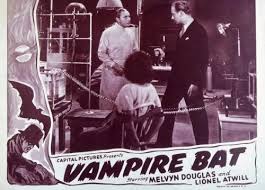
"The Mystery of the Wax Museum" would finally be released on February 18, 1933 and became the last dramatic motion picture shot in the Two Strip Technicolor Process. It was considered a "Lost" film. A copy of the first reel was discovered and shown in London in 1960, but while going through Jack L. Warner's personal fault in 1970 a complete 35 mm print was found and restored. It would be shown at the Grauman's Chinese Theater with Fay Wray making a guest appearance shortly afterwards.
Directed by Michael Curtiz who also directed "Dr. X", Errol Flynn's "Captain Blood", "The Charge of the Light Brigade" and "The Adventures of Robin Hood" and Bogart and Bergman in "Casablanca", "The Mystery of the Wax Museum" took place in 1933 even though it was filmed in 1932. Twenty years later Warner Brothers would change the year to sometime in the 1890's and release the story in 3-D as "The House of Wax" directed by Andre de Toth. De Toth had only one eye making him an interesting choice to film a 3-D motion picture that relied upon depth of field.
Lionel Atwill played sculptor Ivan Igor whose original studio was destroyed by fire 12 years earlier in 1921. Ivan Igor's hands and feet were badly burned and he is confined to a wheelchair. His face however is strangely not burned.
A series of murders starting with Igor's crooked partner start to occur in New York City and exhibits at his Wax Museum reflect the crimes. Two young women visit the museum Florence Dempsey played by Glenda Farrell and Charlotte Duncan played by Fay Wray. Charlotte's fiance works for Igor as a sculptor. Florence is murdered and her too exact replica turns up as Joan of Arc in Wax. Charlotte reminds Ivan of his greatest work Marie Antoinette.
As any one familiar with Vincent Price as Professor Henry Jarrod in "The House of Wax" you know what Wray will discover about Lionel Atwill's original Ivan Igor. Both movies are available on a Two DVD set.
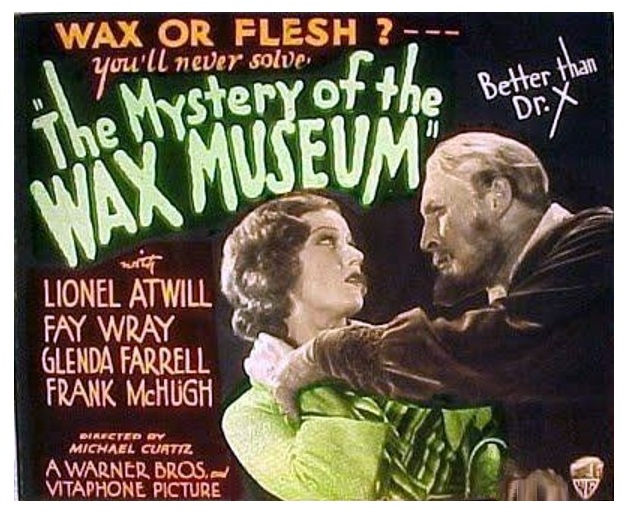

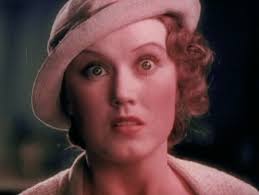
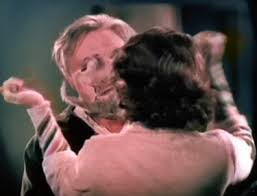



At some point while this film was still in production Merian C. Cooper finally approached Fay Wray about appearing in his next picture. According to Wray in her autobiography "On the Other Hand". Cooper promised her she would be starring with the:
Street of Sin was the final American film of Scandinavian director Mauritz Stiller, whose inability to adapt to Hollywood (and vice versa) forced him to return to Sweden where he died, dispirited and disillusioned, not long after the release of this film. The story is set in the seamy Soho section of London, where burglar Basher Bill (Emil Jannings) shares bed and board with his sluttish girlfriend Annie (Olga Baclanova). As wicked as they come, Bill softens when he meets virtuous Salvation Army lass Elizabeth (Fay Wray). He helps her take care of a group of orphans, abandoned in the Army's care. The jealous Annie, assuming (correctly) that her boyfriend's interest in Elizabeth goes far beyond sympathy, betrays Bill to the cops. Mortally wounded in the climactic gun battle, Bill holds no grudge against Annie: in fact, as he breathes his last, he advises her to save her soul by joining the Salvation Army -- which she does! Since the film no longer exists, it is hard to tell whether Street of Sin was truly worthy of Stiller's talents; chances are, however, that Paramount heavily tampered with the film before its releaseBelow are two stills of Emil Jennings and Fay Wray from the film.
Fay Wray and Gary Cooper were back together in a romantic love story.
Fay Wray's next movie released October 8, 1928 had actually started shooting in June 1926 directed by and starring Eric von Stroheim. Shooting ended in January 1927 not because the motion picture was finished, but that Paramount was finished with von Stroheim the perfectionist re-shooting and re-shooting. The films original budget was $300,000 and it had risen to $1,250,000 when the production was shut down and film editing began. Those two figures in 2015 currency would have been $3,935,396 in June 1926 when the production began and $16,397,486 in January 1927 when the production was shut down.
Eric von Stroheim played Prince Nickolas von Wildeliebe-rauffenberg known as Nikki and Fay Wray played Mitzi, mitzeri Schrammell a inn keeper's daughter. Zasu Pitts plays the women Princer Nikki must marry for money Cecila Schweisser,

The following review of the motion picture from the New York Times makes mention of a possible sequel. Paramount had von Stoheim do just that, but the film called "The Honeymoon", also releasedin 1928, was never released in the United States. The film told of the marriage of Mitzi and Schani and the attempted murder of Nikki, but like most pictures at the time was about to fall victim to the "Talkies". "The Jazz Singer" with synchronized singing by Al Jolson and just a few words of unplanned spoken dialogue had been released by Warner Brothers on October 6, 1927 nine months after "The Wedding March" and before the out takes created "The Honeymoon".
http://www.nytimes.com/movie/review?res=9B04E5D8173EE73ABC4D52DFB6678383639EDE
"The Wedding March" was followed by the first of three motion pictures Fay Wray would make for the team of Merian C. Cooper and Ernest B. Schoedsack.
Released in June of 1929 and based upon A.E.W. Mason 1902 novel "The Four Feathers" was the third filmed version of Mason's work brought to the screen. There would be others that followed through 2002. The classic version being made by the Korda Brothers: Alexander and Zolton in 1939. However, this picture was one of the last major motion pictures of the silent era and would be released with a Movie Tone soundtrack with music and sound effects.
The story is set in the Sudan in 1885 as the British fight the armies of "The Mahdi". It tells of Lt. Harry Faversham, played by Richard Arlen, being accused of cowardliness by his two friends and his commanding officer. He is presented with each of the three's calling cards and attached is the traditional, for the British Army under Queen Victoria, feather with symbolizes Faversham's cowardliness. The fourth feather comes from his fiancee Ethne Eustace played by Fay Wray. The motion picture featured William Powell and Clive Brook,
The movie was a big budgeted production. It included scenes actually shot in the Sudan by Cooper and Schodsack making it one of the first Foreign location motion pictures. These scenes are described in a New York Times review on the film's release,
It was for this film that Ernest Schoedsack and Meriam Cooper, the famous producers of "Grass" and "Chang," went to Northern Africa to photograph backgrounds, and although there is not enough of their competent work it is easy to see that the pictures they brought back with them served to reproduce with marked authenticity the Sudan episodes in which the players are beheld. The few actual scenes Messrs. Cooper and Schoedsack did photograph are magnificent, especially those with hippopotami and baboons and others in which the Fuzzy Wuzzies are beheld in great hosts.
The story itself is a melodrama wherein coincidences have by no means been ignored. The acting of the principals is, however, most competent and convincing, even though the principal character bears a charmed life and is marvelously fortunate in his adventures.
Merian C. Cooper is an interesting personality and his life is full of real adventure and political espionage possibly for the Office of Strategic Services (O.S.S.). He was definitely not the typical Hollywood Producer/Director. You can read his life story on my blog and you might believe what I have written is a Hollywood script, if it wasn't all true.
http://kinescopedreams.blogspot.com/2015/10/merian-c-cooper-life-of-real-carl.html
For the first time Fay Wray talks!
Released July 20, 1929 only one month after the release of "The Four Feathers" was "Thunderbolt". This was a pro-noir film about a master criminal known as "Thunderbolt", portrayed by George Bancroft, being caught and facing execution. Into the next cell comes Bob Morgan, played by Richard Arlen, a young man framed by "Thunderbolt" so he can kill him. Morgan's crime is that he has fallen in love with "Thunderbolt's" girlfriend Ritzy played by Fay Wray.
George Bancroft was nominated for the Best Actor Oscar for the motion picture.
"Thunderbolt" would be followed by two films starring William Powell "Pointed Heels" in 1929, and "Behind the Make-up" which started off 1930. The second Powell motion picture was followed by the very forgettable Paramount quickie titled "Paramount on Parade". A 102 minute motion picture to showcase Paramount Pictures talent which all the studios did from time to time. In her sequence Fay Wray with Gary Cooper, Richard Arlen and Jean Arthur had to perform the song "Let Us Sing to the Girl of My Dreams".
The song was one of two technicolor sequences in the movie. The footage survives, but not the sound. It sure would have been interesting to hear the singing voices of those four actors.
When Fay Wray and Gary Cooper made William Wellman's "Legion of the Condemned" two years earlier she had top billing, but Coop's star had risen in that short time and now with "The Texan" their billing was reversed.
Should you look at the poster for the 1928 film although Fay Wray is billed first. Both actors names are of equal size creating to the potential audience a sense of equality. However, looking at the poster for "The Texan" you see not only Gary Cooper with first billing, but a difference in the size of the letters used in their names. Wray's full name is about the size of Gary Cooper's first name, but also half the size of his last name "COOPER". A reflection of how far the extra "Wild Bill" Wellman gave a break too had now come and would stay for the rest of his life.
The screenplay was based on O, Henry's short story "The Double-Dyed Deceiver". Gary Cooper played "The Llano Kid" who after shooting a young gambler in self defense is forced to hide from the law. The Kid is helped by a corrupt lawyer who involves him in a swindle of a Mexican aristocrat. The typical O' Henry twist comes when the Lllano Kid finds out the young gambler was the aristocrat's son.
Two changes to the original story were made. The aristocrat became a widow and there is now a lovely niece Consuelo played by Fay Wray for love interest. Otherwise this is O. Henry's tale as written.
Five more "B" westerns brings Fay Wray to director Frank Capra's 1931 motion picture "Dirigible". "Wild Bill" Wellman wanted to do a film about Dirigibles and the men who flew them. He even had a finished script and had known many of the men who had flown this type of aircraft during the war. Especially as he fought for France and it was the European countries and more specifically the Kaiser's Germany that saw the airships potential as bombers. Wellman could not get the backing,he needed and it was Columbia Pictures that would make a film with the aforementioned Frank Capra as director. This film came out three years before Capra's "It Happened One Night" with Clark Gable and Claudette Colbert, six years before his production of James Hilton's "Lost Horizon" starring Ronald Coleman and Jane Wyatt and fifteen years before he made the annual Christmas classic "It's A Wonderful Life" starring James Stewart and Donna Reed.
As you can see my the above poster Fay Wray dropped to third billing on the picture, but she was also the only women listed in the film credits playing Helen Pierce. Helen is the wife of "Frisky" Pierce played by Ralph Graves and wants him to stop flying, because of all the risks he takes.
The motion picture tells of two expeditions to the South Pole. The first ends in disaster and the second is a rescue mission. The motion picture was notable for its flying scenes, showing the aircraft carrier Lexington during flight operations and a mid-air docking of a fighter aircraft with a dirigible. All authentically recreated among the other aviation sequences. The original story was by Frank "Spig" Wead who was also the picture's aviation technical adviser.
For my readers interested in Wead's inspirational life I recommend John Ford's 1957 motion picture "Wings of Eagles" starring John Wayne as Wead and Maureen O'Hara as his wife.
The script for "Dirigible" was written after Naval Lieutenant Commander Frank Wead had the accident in his home which forced him to take medical retirement, It had been thought at the time of the accident that he might never walk again, A powerful sequence shown in Ford's movie.

One short and four forgettable movies later would find Fay Wray being part of motion picture history by appearing in the first full length Two-Strip Technicolor Horror movie "Dr. X" from Warner Brothers released August 3, 1932. This was also the first of three horror films she would make opposite Lionel Atwill.
The story takes place in 1932 New York City and Long Island with tongue firmly in cheek. A reporter played by Lee Tracy is investigating the "Moon Killer Murders". His investigation leads him to the home of Dr. Xavier played by Lionel Atwill. Wray plays Atwill's daughter Joan and Tracy's love interest. Playing the doctor's one armed assistant Dr. Wells is Preston Foster.
The film is pre-Production Code and was able to use themes of rape, cannibalism, murder and prostitution revolving around the unknown killer. The climax comes when the killer is revealed as he uses "synthetic flesh" to create a horrific identity. That sequence occurs while Atwill is conducting an experiment with the approval of the police recreating the killers last murder. However, of course things go wrong as the "Moon Killer" in front of those watching the experiment attacks Fay Wray.
This movie by today's standards is pure camp with over the top performances, but it is also great fun.
On September 16, 1932 Fay Wray appeared in her second motion picture from the team of Merian C. Cooper and Ernest B. Schoedsack "The Most Dangerous Game". As with "Dr. X" the picture is considered a classic of the period and has not been topped by several remakes.
The original 1924 short story, which I read in Junior High School, by Richard Connell was reworked by James Ashmore Creeman adding additional ship wrecked characters to the original one character. Fay Wray played Eve Trowbridge, Joel McCrea the original character of Sanger Rainsford, Leslie Banks was the villain of the piece Big Game Hunter Count Zaroff, Robert Armstrong the future Carl Denham in "King Kong" played Wray's brother Martin Towbridge.
Playing Count Zaroff's "henchman" Ivan was African American actor Noble Johnson. Johnson had appeared in many feature films since 1915 such as the "Murders in the Rue Morgue" as Bela Lugosi's "henchman". Over his career Noble Johnson would play more Native American roles than any Native American actor including "Red Shirt" in John Ford's "She Wore A Yellow Ribbon", However, Johnson would always be remembered for one role even if his name was not. He played the Chief of the Natives on Skull Island in "King Kong" and "Son of Kong".
Noble Johnson's life is very interesting including playing "White" roles in silent movies as my article on his life explains:
http://kinescopedreams.blogspot.com/2015/06/noble-johnson-african-american-pioneer.html
Noble Johnson as Ivan
"The Most Dangerous Game" is of course "MAN"! Leslie Banks' Count Zaroff starts hunting his shipwrecked "guests" on his island. Zaroff is saving Joel McCrea's Sanger Rainsford a Big Game Hunter of renown for last. Of course McCrea and Wray are falling in love with each other which complicates matters for Zaroff.
Again note the billing on the poster. Even though Fay Wray is listed second this is Joel NcCrea's motion picture as the size of his name is twice everyone else, Leslie Banks a distinguished British actor on stage and in motion pictures is listed third and fourth billing goes to Robert Armstrong. Who like Wray would soon be forever associated with one motion picture, but the name of the man behind that film and this one is missing credit on the poster. The reason being that Merian C. Cooper and Ernest B. Schoedsack's partner David O, Selznick was the "Executive Producer" of "The Most Dangerous Game" and Cooper only "Associate Producer". Although this was Cooper's film from start to finish.

I post the above map, because think of it in terms of "Skull Island". Although the authorization to make "King Kong" had not been given when "The Most Dangerous Game" started production. Cooper told the RKO Executives not to schedule the films sets for immediate tare down as was the normal procedure. He told them there was another script he wanted to make and the sets could save the studio money by being reused.
It has been reported that both movies were shot at the same time on these sets. A lot of reviewers make it seem as if "King Kong" was shot during the day and this film at night. Like the previous years English and Spanish language versions "Dracula" at Universal Studio. This is not completely true as Cooper initially did shoot test footage of "King Kong" while "The Most Dangerous Game" was in production to show RKO Executives, but "King Kong" would be shot in segments to be reassembled later and, yes, some footage would be shot during the other films production.
Want to substitute Bruce Cabot for Joel McCrea in this scene from "The Most Dangerous Game" below?
How about the substituting the crew of the "Venture" for these two actors in this scene.
Leslie Banks as Count Zaroff
Robert Armstrong
There's a major reason why both films were not shot at the same time. Although Robert Armstrong had contracted with Cooper for two films and would shoot some scenes in both on the same days as production completed on "The Most Dangerous Game". The part of Ann Darrow had not been cast. The idea of using Fay Wray had yet to cross Merian C. Cooper's mind. He decided he wanted a blonde for the part of Ann Darrow, This idea was to permit black and white contrast between the girl and the gorilla's pelt. Fay Wray was brunette.
Cooper wanted the popular 1930's actress Dorothy Johnson for Ann Darrow. When she couldn't do the role. Cooper next went to Jean Harlow and afterwards Ginger Rodgers. Both were unavailable, or didn't want to do the part. Live action filming for "King Kong" had been going off and on between May and June 1932 as the script was being revised and the search for Ann Darrow continued.
As of this writing "The Most Dangerous Game" is available on YouTube.
On January 21st the first of 11 1933 motion pictures featuring Fay Wray was released. It was actually her third horror movie with Lioniel Atwill, but only the second released. The film had the intriguing title of "The Vampire Bat". The reason for this change of position was due to the fact that although filming of "The Mystery of the Wax Museum" was completed. The picture was having post production problems. So "Majestic Pictures" rushed this quickie into production to use all the publicity for the Warner Brothers production to their advantage. They even hired actor Dwight Frye to be in some scenes with Wray as a means also for attracting audiences. It worked.
.
"Majestic Picture" along with some other small studios would be combined shortly into "Republic Pictures".
The plot for "The Vampire Bat" is described on the website IMDb by "Sister Grimm" <srgrimm@teleport.com>:
When the villagers of Klineschloss start dying of blood loss, the town fathers suspect a resurgence of vampirism. While police inspector Karl remains skeptical, scientist Dr. von Niemann cares for the vampire's victims one by one, and suspicion falls on simple-minded Herman Gleib because of his fondness for bats. A blood-thirsty mob hounds Gleib to his death, but the vampire attacks don't stop.
Frye played Herman Gleib and Fay Wray was cast as Ruth Bertin, Lionel Atwill played Dr, Otto von Nieman and Melvyn Douglas portrayed Karl Brettschneider.
"The Mystery of the Wax Museum" would finally be released on February 18, 1933 and became the last dramatic motion picture shot in the Two Strip Technicolor Process. It was considered a "Lost" film. A copy of the first reel was discovered and shown in London in 1960, but while going through Jack L. Warner's personal fault in 1970 a complete 35 mm print was found and restored. It would be shown at the Grauman's Chinese Theater with Fay Wray making a guest appearance shortly afterwards.
Directed by Michael Curtiz who also directed "Dr. X", Errol Flynn's "Captain Blood", "The Charge of the Light Brigade" and "The Adventures of Robin Hood" and Bogart and Bergman in "Casablanca", "The Mystery of the Wax Museum" took place in 1933 even though it was filmed in 1932. Twenty years later Warner Brothers would change the year to sometime in the 1890's and release the story in 3-D as "The House of Wax" directed by Andre de Toth. De Toth had only one eye making him an interesting choice to film a 3-D motion picture that relied upon depth of field.
Lionel Atwill played sculptor Ivan Igor whose original studio was destroyed by fire 12 years earlier in 1921. Ivan Igor's hands and feet were badly burned and he is confined to a wheelchair. His face however is strangely not burned.
A series of murders starting with Igor's crooked partner start to occur in New York City and exhibits at his Wax Museum reflect the crimes. Two young women visit the museum Florence Dempsey played by Glenda Farrell and Charlotte Duncan played by Fay Wray. Charlotte's fiance works for Igor as a sculptor. Florence is murdered and her too exact replica turns up as Joan of Arc in Wax. Charlotte reminds Ivan of his greatest work Marie Antoinette.
As any one familiar with Vincent Price as Professor Henry Jarrod in "The House of Wax" you know what Wray will discover about Lionel Atwill's original Ivan Igor. Both movies are available on a Two DVD set.

At some point while this film was still in production Merian C. Cooper finally approached Fay Wray about appearing in his next picture. According to Wray in her autobiography "On the Other Hand". Cooper promised her she would be starring with the:
"tallest, darkest leading man in Hollywood"She assumed he meant Clark Gable.


